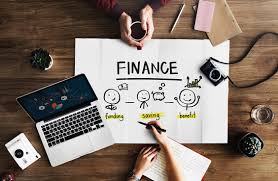Tokenized Art and the Future of Investment
 Finance Freak
Finance Freak
Tokenized art is an emerging trend at the intersection between blockchain technology and the art market, changing how art is being bought, sold, and invested in. It uses blockchain-a decentralized, digital ledger where artworks can be tokenized into non-fungible tokens that enable proof of ownership and authenticity and allow for the transfer of rights to others. This turn of physical and digital art into tokenized assets is a revolution not only in the way people interact with art but also in the way they invest in it, democratizing the art market more than ever before.
The world of art is conventionally very elitist, representing very high barriers to entry considering the costs of original works and the complexity of dealing with galleries, dealers, and auction houses. This market was available only to the very wealthy collectors. NFTs make this dynamic different. With tokenized art, fractional ownership is possible; therefore, instead of buying an entire artwork, now investors are able to purchase a fraction of it. This means a painting worth $1 million, for example, can be divided into several shares, and smaller investors can invest in it by owning a share of the artwork and making profits on an appreciated increase. Tokenized art democratizes art investment, making it more available to more people who could not participate in it previously.
The other positive effect of tokenization is that it brings more transparency to the art market. The blockchain acts as an immutable record of the history of the artwork in its creation, sales, and changes in ownership. This aspect counts for much in a business where issues of forgery and disputes over authenticity can be less frequent. That means, in the case of tokenized art, every collector/investor will be able to see the origin of the piece in question and therefore will remove much of the risk of buying stolen or counterfeit artworks. With such heightened transparency comes building trust, and that might invite more investors into the market.
More than that, tokenized art opens entirely new opportunities even for artists themselves:. This provides artists with an avenue to mint their artworks as NFTs, to sell directly to collectors without having to use agents. It therefore gives the artist not only more control over the work and the prices they can sell it for but also royalties every time the tokenized art is resold in secondary markets. This gives way to a recurring stream of revenue from the work, as opposed to the traditional art market, where the artist benefits only once from the sale of the work.
The growth in tokenized art also reflects broader trends in digital culture: younger, more digital-native generations value digital assets and experiences more and more. For investors in this space, NFTs represent more than a simple financial instrument but also a form of cultural capital-a statement to personal identity and the active engagement with a worldwide digital community. Owning a tokenized piece of art will constitute a statement about financial and cultural value that bridges the gap between traditional investment assets and new forms of digital experience.
However, exciting as these opportunities may be, there are risks and challenges attached to tokenized art. The values of NFTs can be highly speculative, and the prices of the tokenized artworks may fluctuate greatly depending on the trending and market sentiment or hype. As with all investments, there is the possibility of a loss, especially to unsophisticated investors who do not fully understand the dynamics of the NFT market. Besides, there are questions about the long-term sustainability of this NFT art market as it progresses toward maturity and probable regulatory review.
Another problem related to tokenized art has been linked with environmental concerns. Thousands of NFTs have been minted on blockchain networks, such as Ethereum, which currently relies on energy-intensive proof-of-work mechanisms. The level at which criticisms against the environmental impact of these networks is high, due in part to how high the carbon footprint production is from making and trading NFTs. Still, attempts to iron this problem out are very well underway, such as migrating blockchain platforms to more energy-efficient models like proof-of-stake.
Ultimately, the future of tokenized art as an investment class depends on how those challenges are overcome, and further development regarding blockchain technology and regulatory environments. Only recently have governments and regulators begun to pay attention to the NFT market, gaining momentum, with overtaxation, intellectual property rights, and anti-money laundering in question. Clear regulation will ensure the legitimacy and long-term viability of tokenized art as an investment asset.
Subscribe to my newsletter
Read articles from Finance Freak directly inside your inbox. Subscribe to the newsletter, and don't miss out.
Written by
